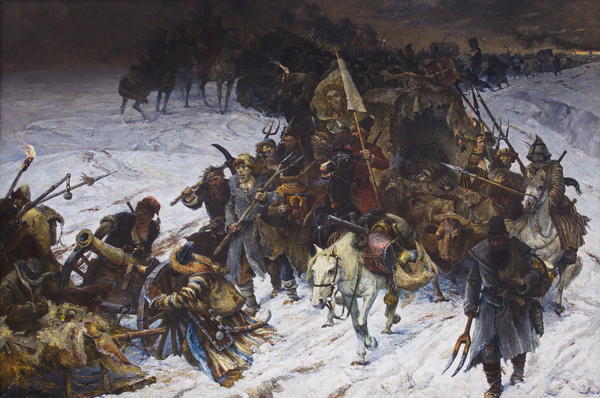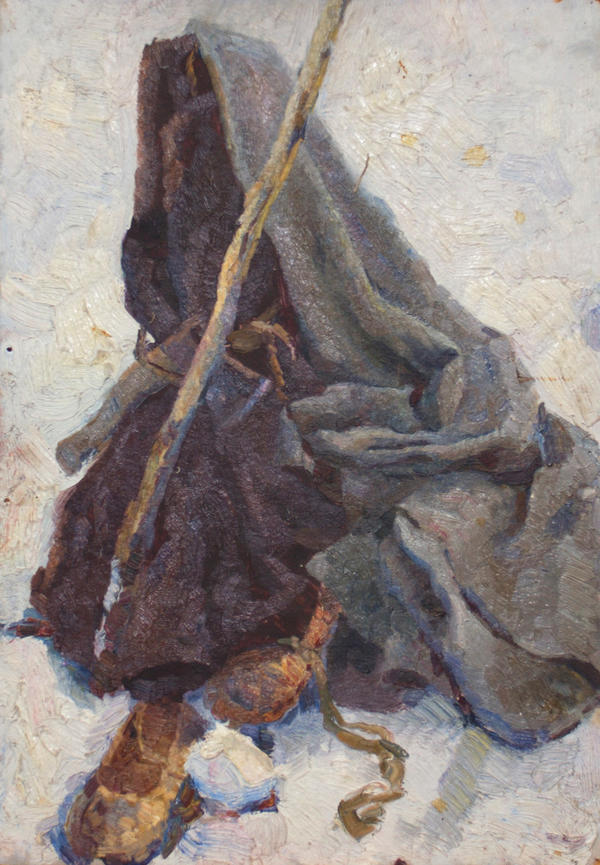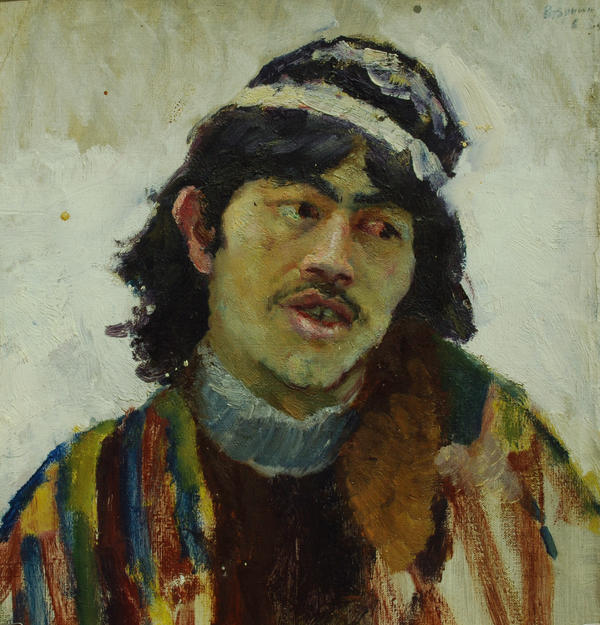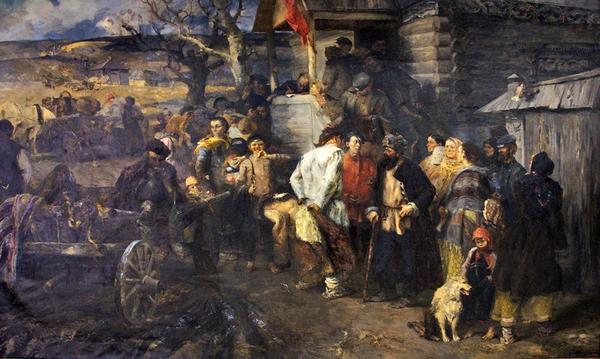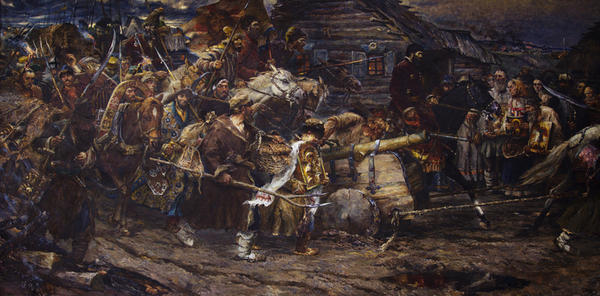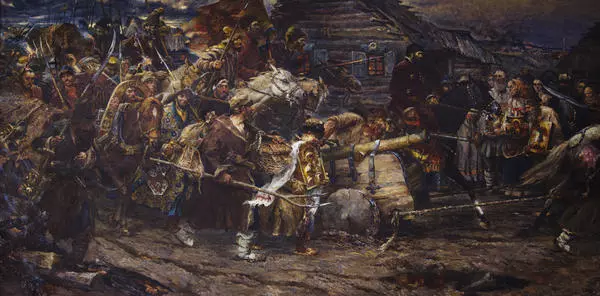Artist Stanislav Molodykh created the painting Pugachevshchina based on historical events. They called Pugachevshchina the rebellion of the Yaik Cossacks against the power of Catherine II. It lasted from 1773 to 1775 and grew into the whole civil war. Escaped Don cossack Yemelyan Pugachev pretending to be Emperor Peter III, husband of Catherine II, ousted from the throne after a palace coup, led the rebellion.
1 / 5
#1
Stanislav Molodykh
Pugachevshchina
#14
#15
In the picture Molodykh showed a formation of peasant militias. Some of them are painted in close-up, and part of the crowd dissolves at the horizon line: this is how the artist conveyed the large number of the rebels.
The painter placed Pugachev himself in the upper left corner of the canvas. The leader of the uprising astride a white horse resembles a commander observing a parade.
#16
From the foreground it is clear that all the militias are dressed and armed in different ways. Among them there are Kirghiz and Kazakhs in national costumes, peasants with pitchforks, flails and home-made slings, horsemen in armor with spears. Two of them drag a cannon on a high carriage with large wheels. In the line-up one can also see a bull harnessed to a wagon: obviously, it carries provisions or spare weapons.
#17
In the centre of the picture, a man in a red sheepskin coat astride a black horse is depicted. He holds a banner with the image of the Savior Not Made by Hands – one of the most revered icons in Orthodoxy. According to the ancient tradition Russian troops fought under such a banner: the Savior Not Made by Hands was considered a symbol of victory and the patron saint of soldiers who defended their homeland.
#18
For this work the artist chose dark cold shades that convey its anxious mood. Night shadows lie on the white snow, people merge toward the horizon into a flat dark mass, and there are blue-black thunderclouds in the sky above them.
Stanislav Molodykh remade the painting Pugachevshchina several times. Over the course of two years he created many charcoal drafts and sketches on separate small canvases for it. Some of them are kept in the funds of the Belgorod State Art Museum.
#19
Stanislav Molodykh. Bag and dishes. Sketch for the painting Pugachevshchina.
#20
Stanislav Molodykh. Fabric and ax. Sketch for the painting Pugachevshchina.
#21
Stanislav Molodykh. Portrait of an Oriental Man. Sketch for the painting Pugachevshchina.
#22
Stanislav Molodykh was born in 1942 near Belgorod, in the village of Bykovo. In 1963 he graduated with honors from the Kursk Art College, then left for Leningrad. There, the artist continued to study, worked in the creative workshop of Victor Oreshnikov, painted portraits, landscapes, pictures on historical plots. Collectivization. Year 1929, Pugachevshchina and 1773 became the most famous of Molodykh paintings.
#23
Stanislav Molodykh. Collectivization. Year 1929, 1977.
#24
Stanislav Molodykh. 1773, 1982.
#25
Belgorod State Art Museum
читать дальшескрыть
00:00
00:00
1x
Pugachevshchina
Время создания
1980
Размер
340x500 cm
Техника
oil on canvas
Коллекция
3
Открыть в приложении
Поделиться



